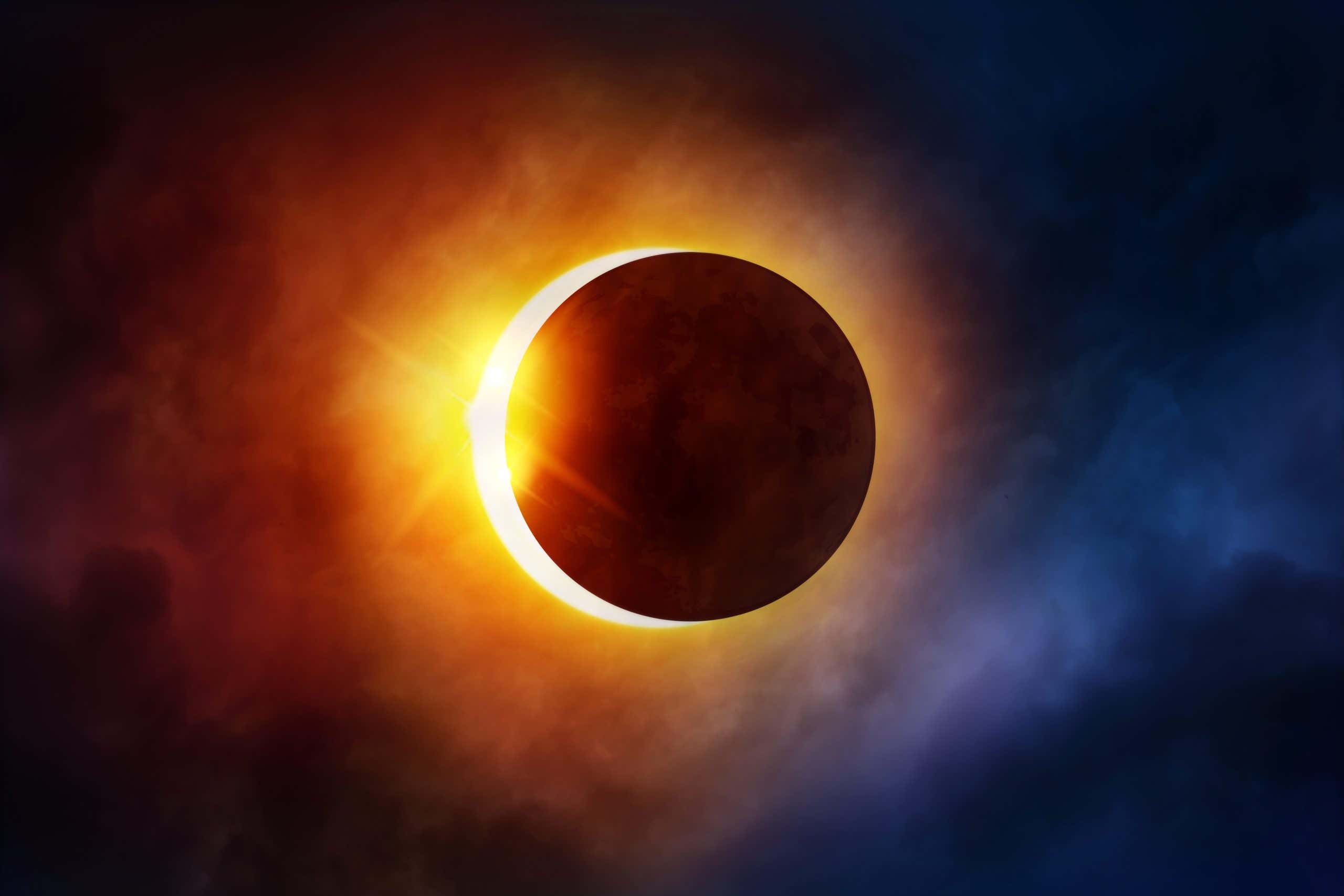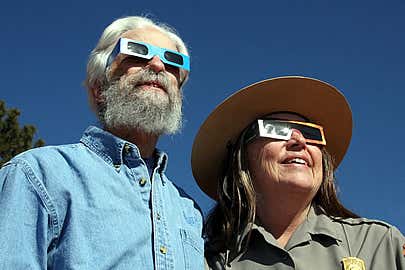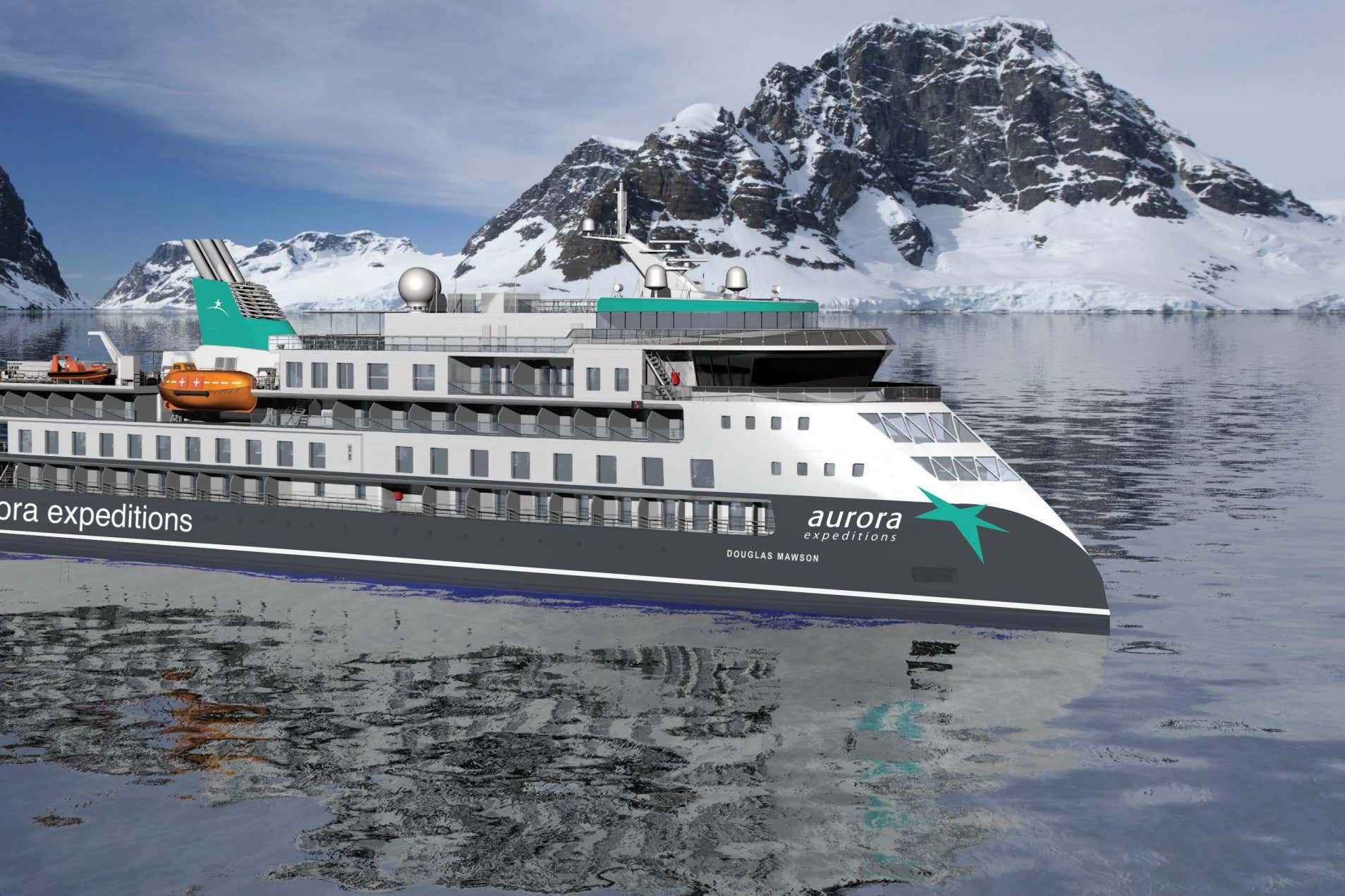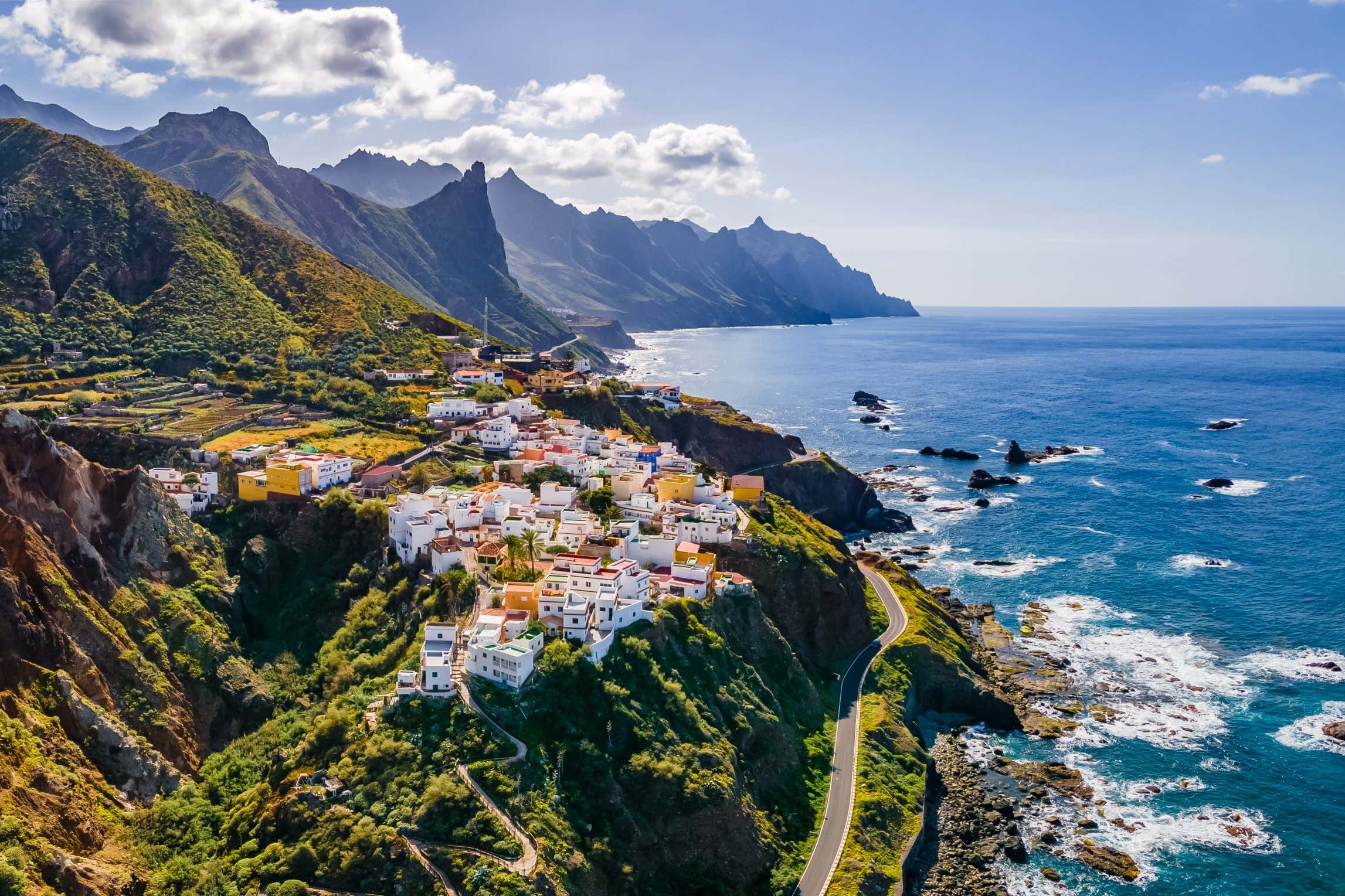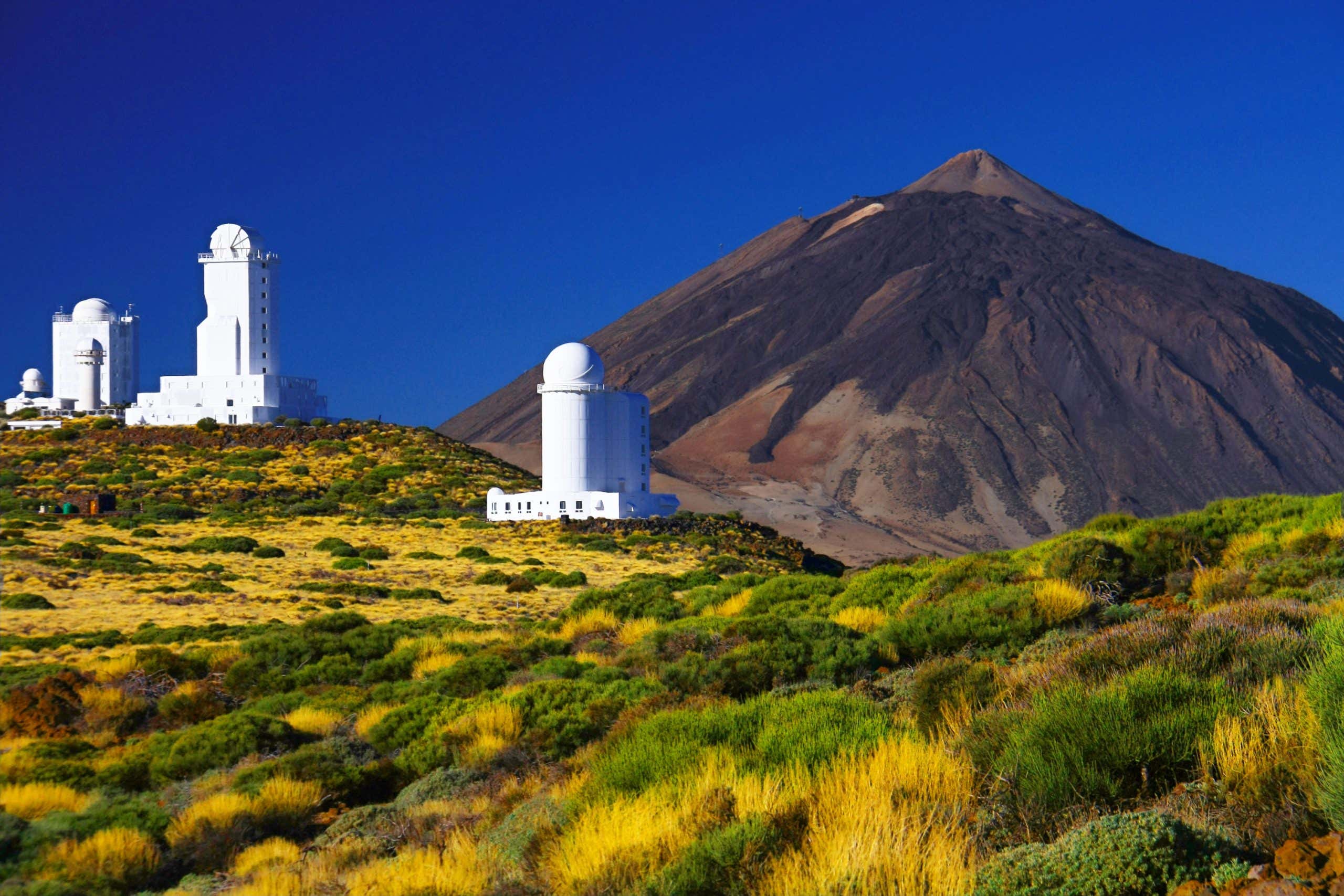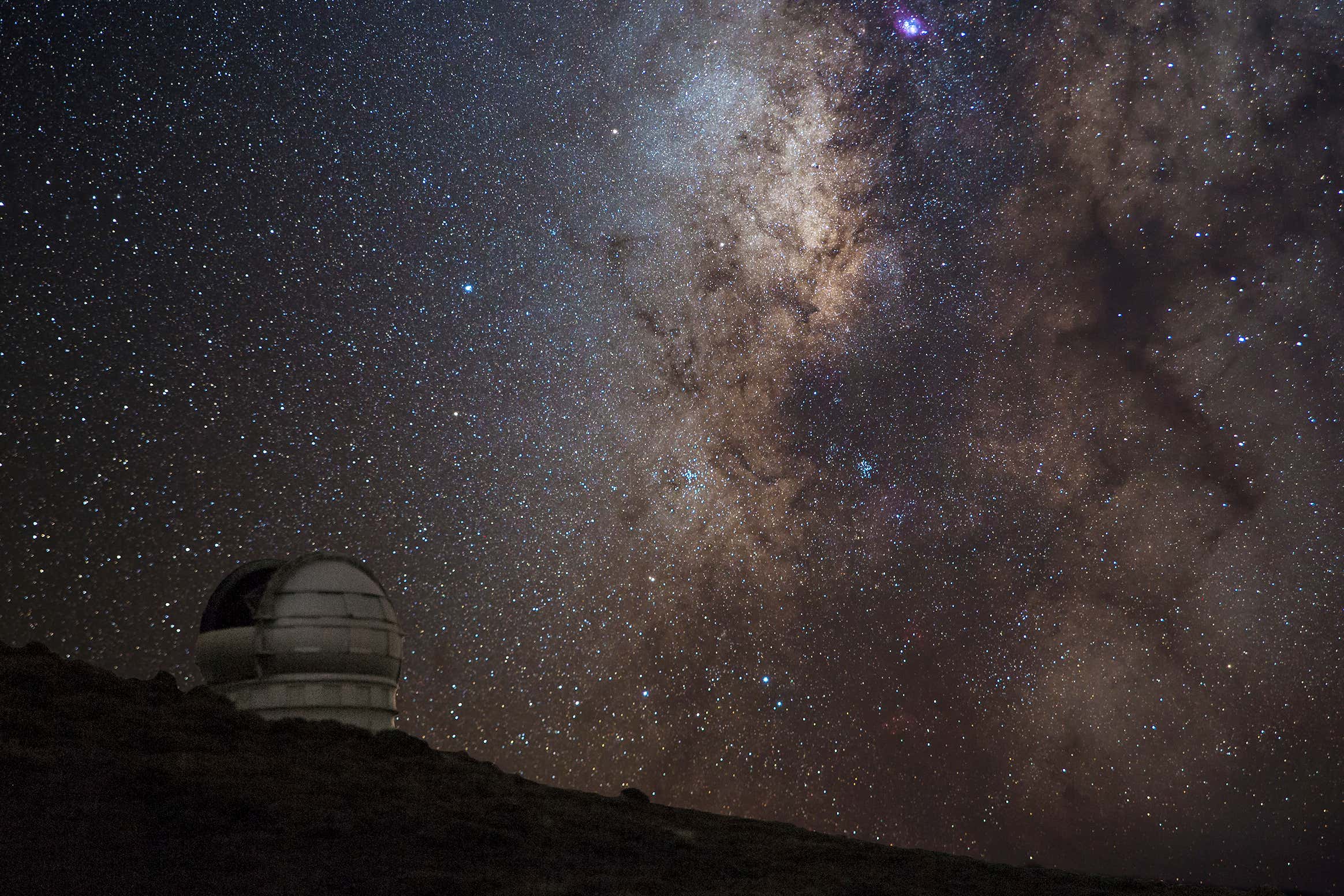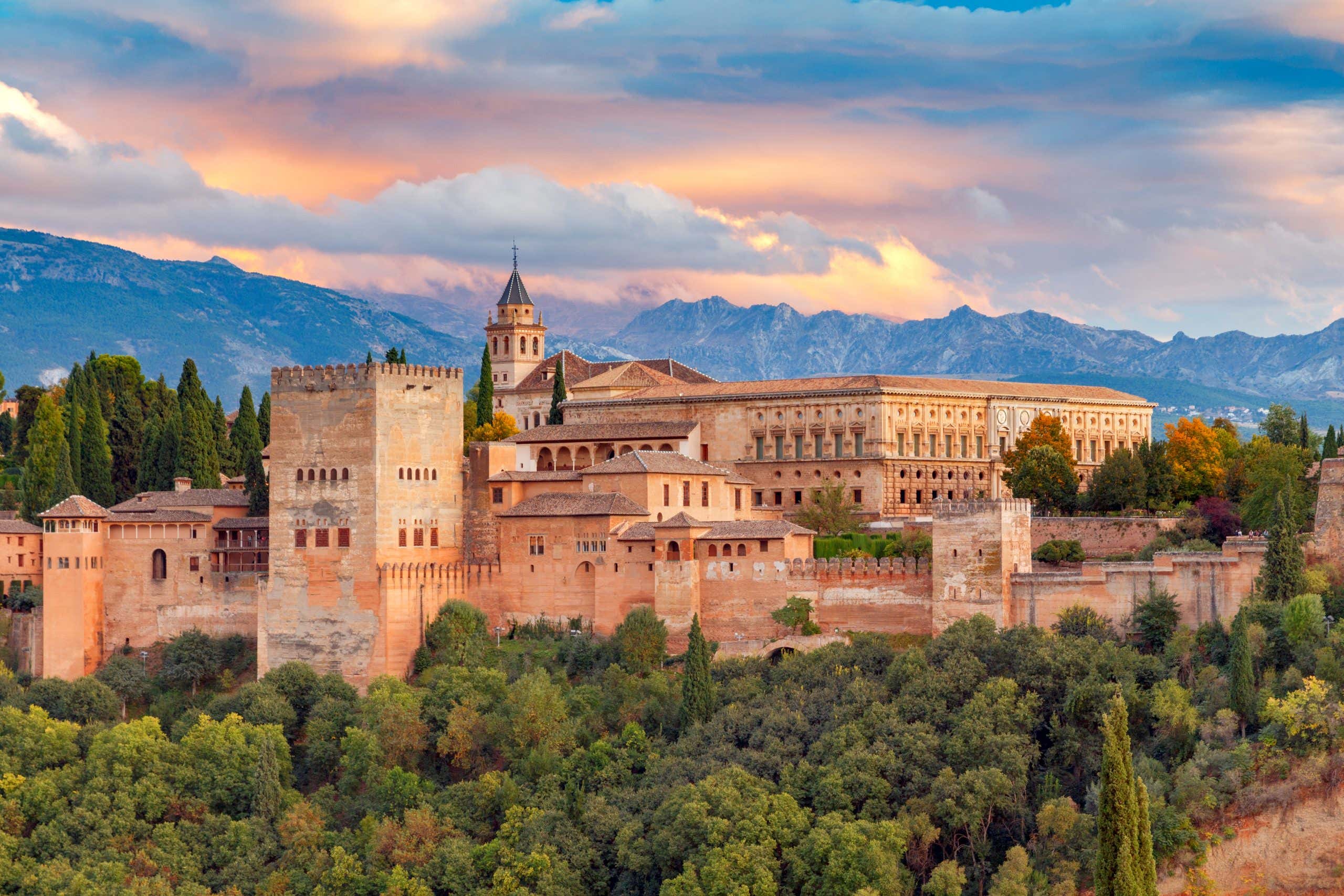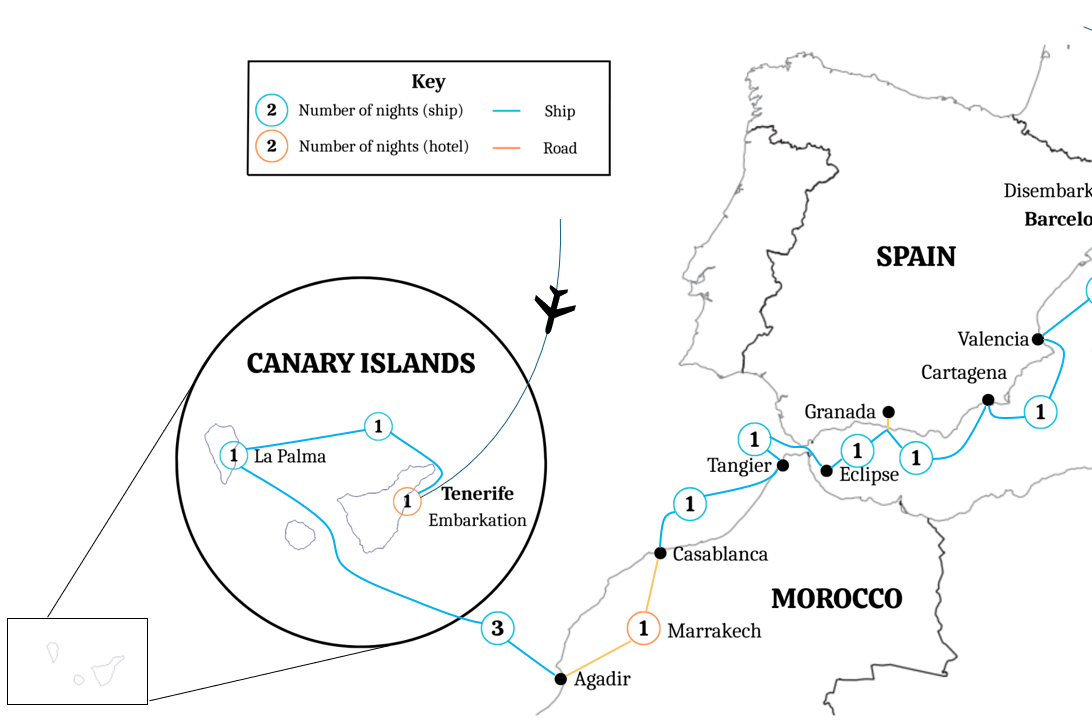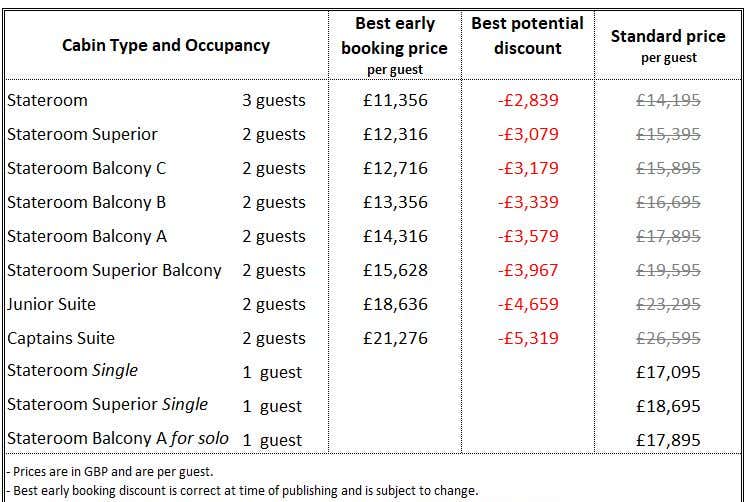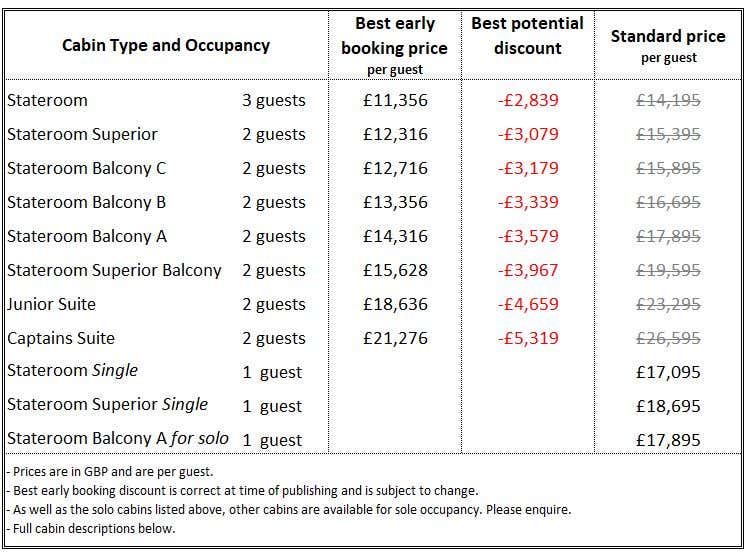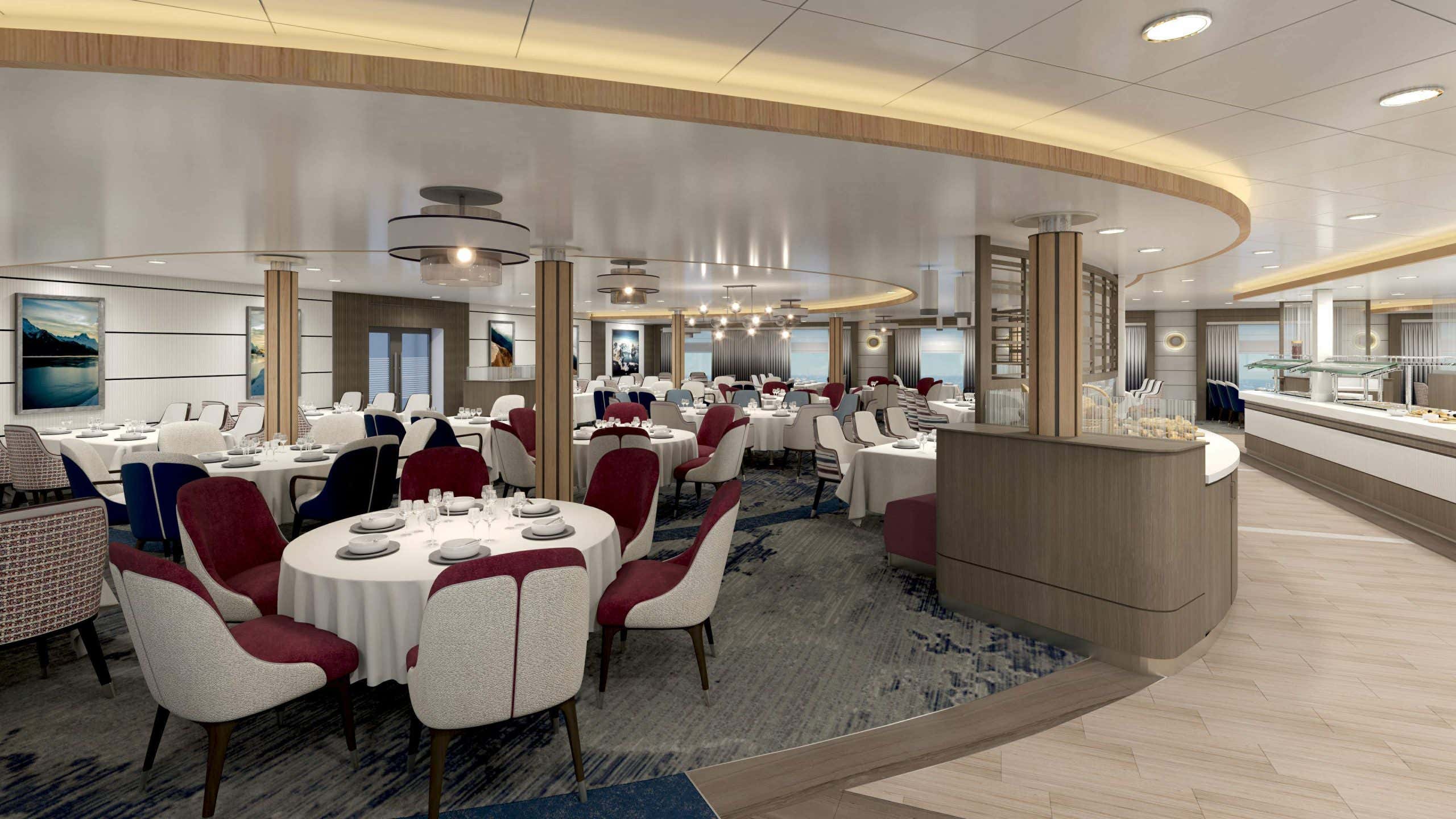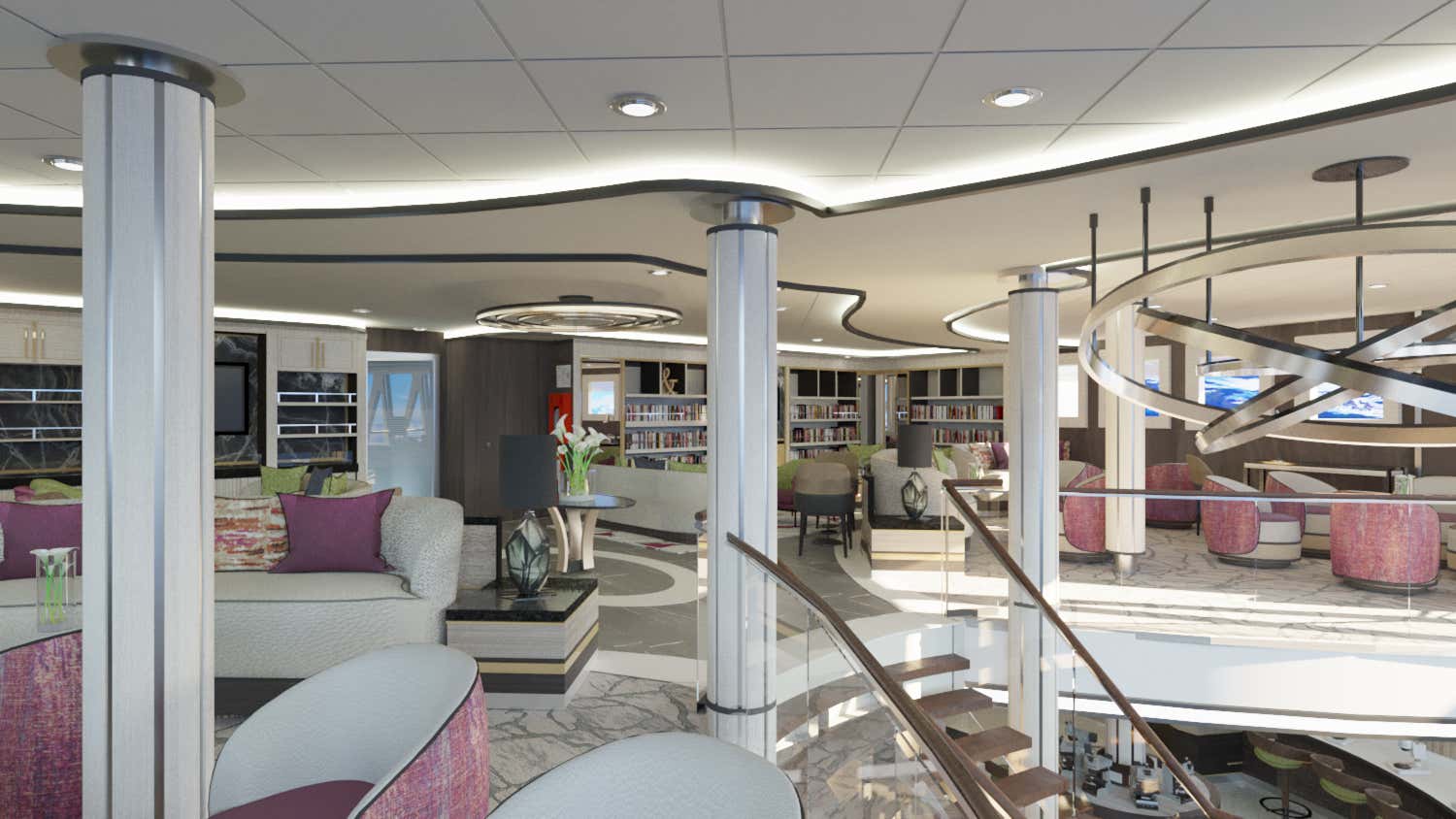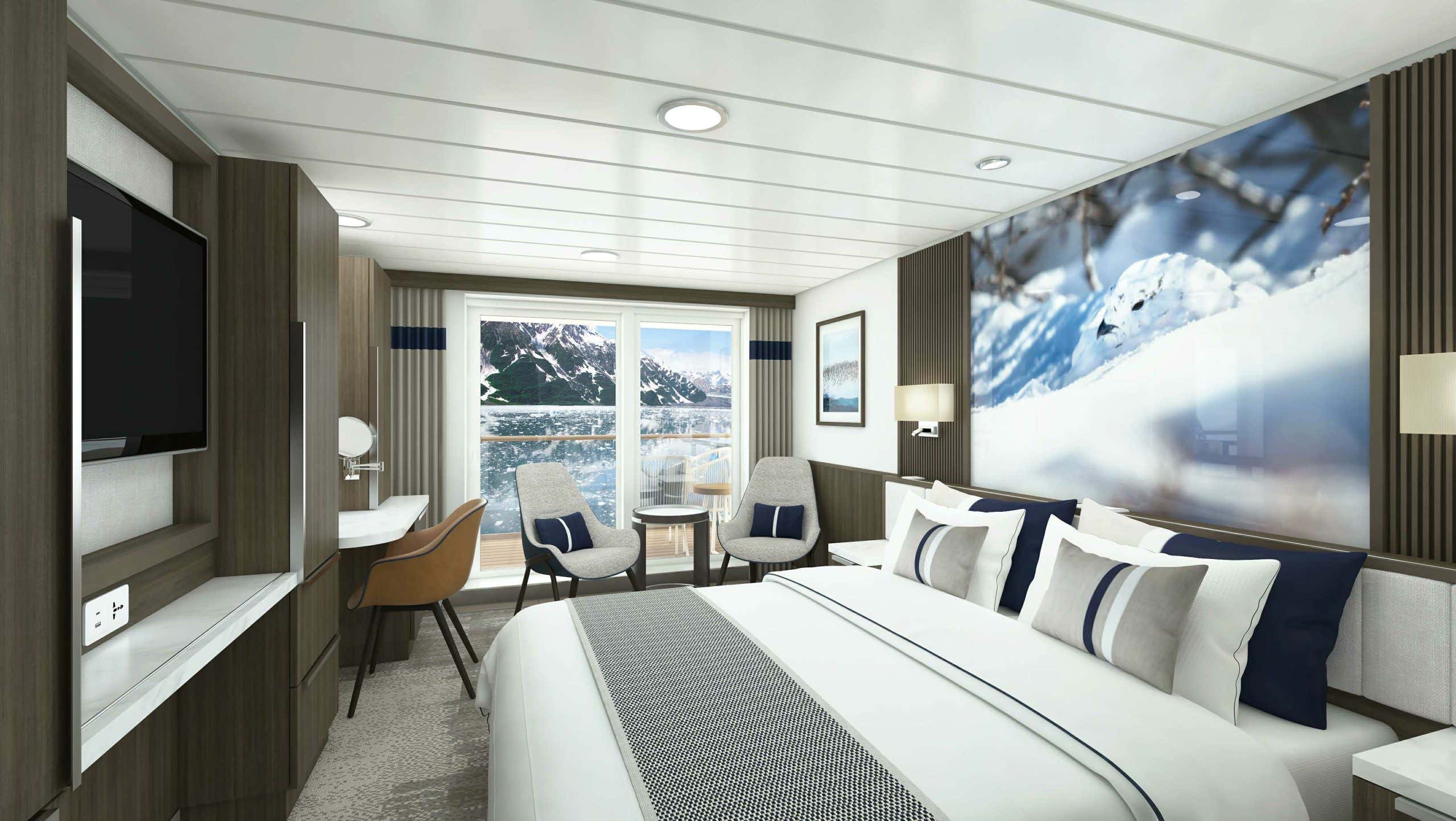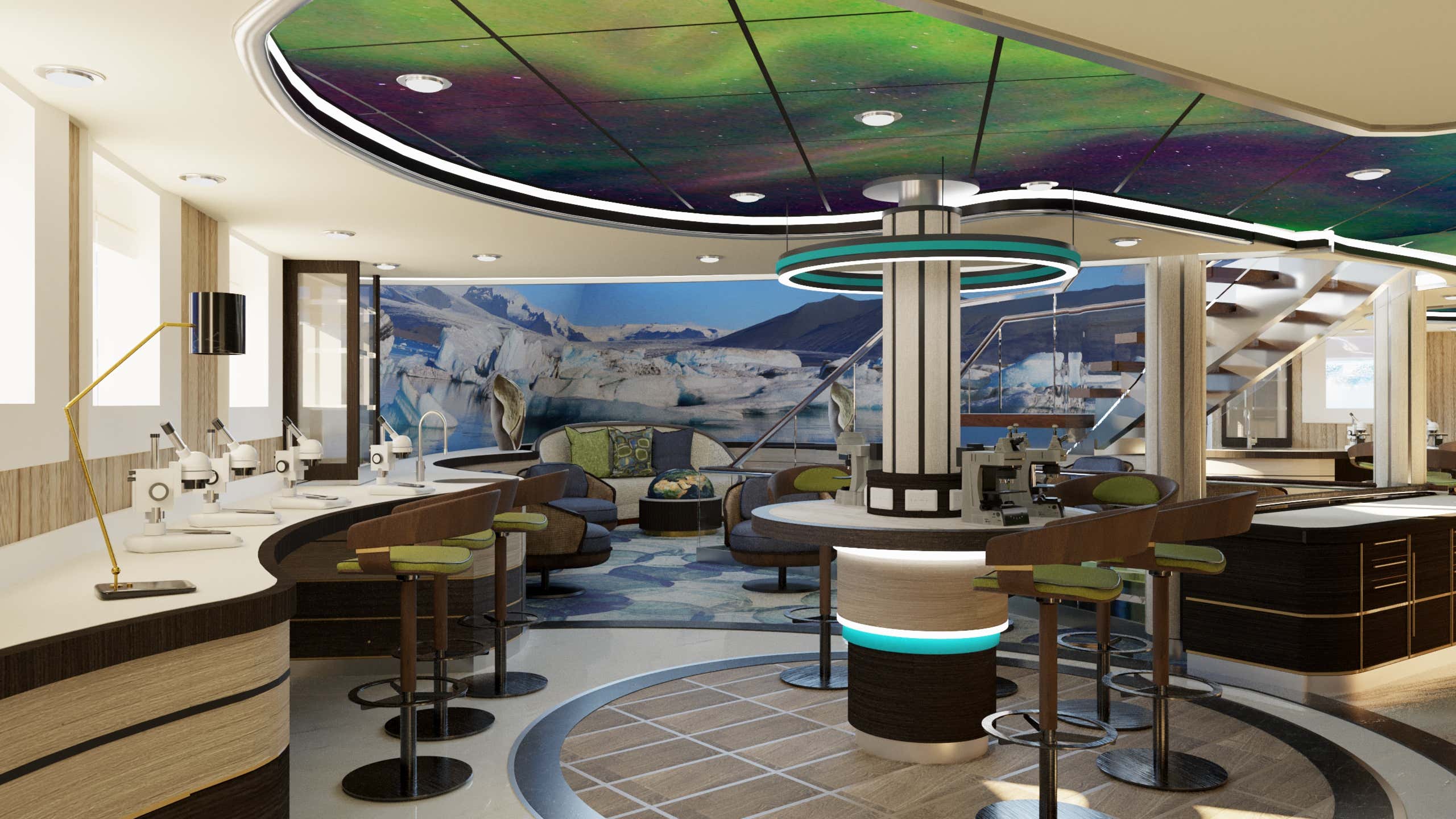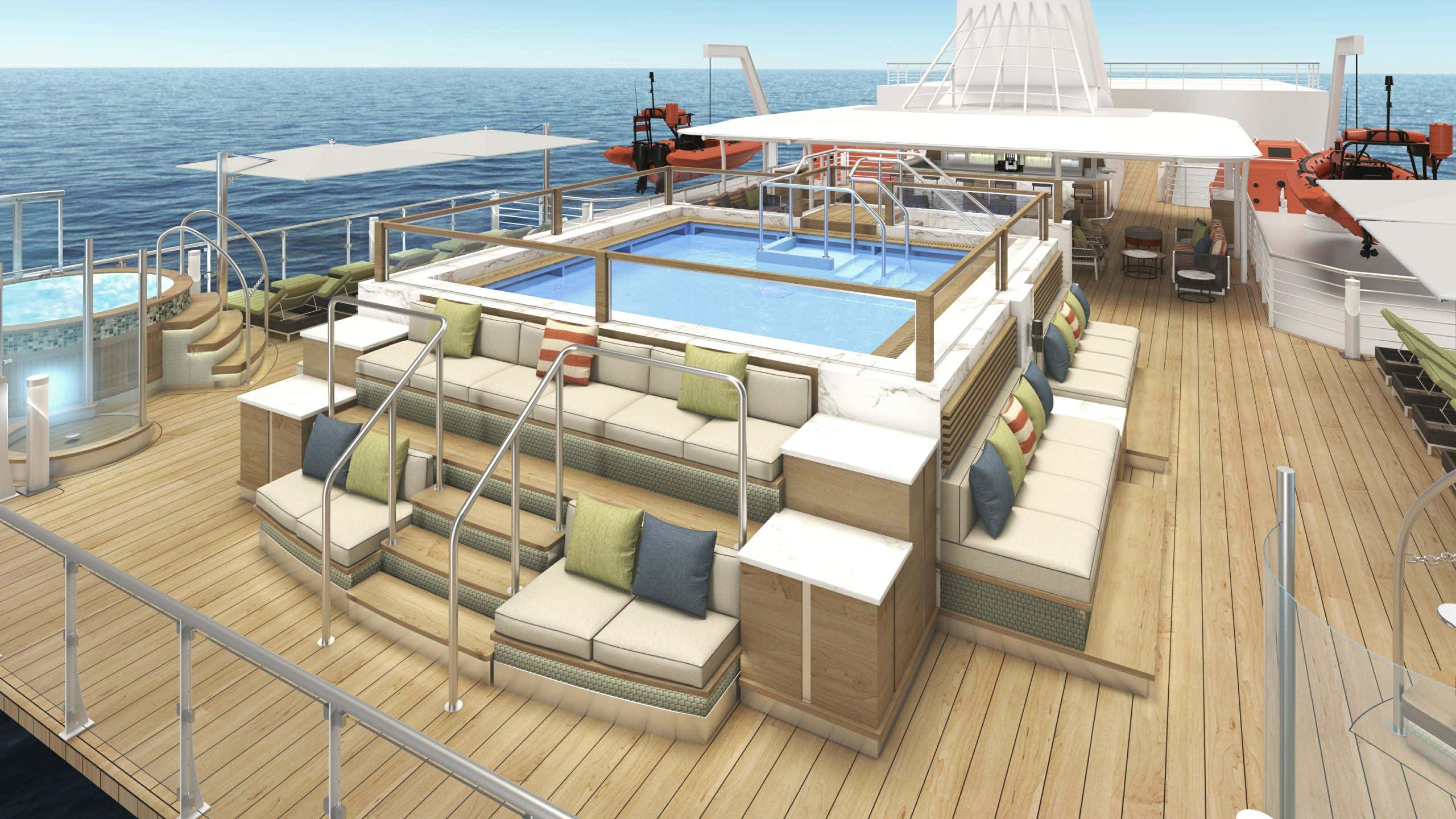Total solar eclipse 2027 cruise: Spain and Morocco
24 July 2027 - 14 days from £11,356.
Early booking discounts of up to 20% are currently available.
Set sail on an extraordinary journey aboard the Douglas Mawson, a state-of-the-art expedition ship, to witness the longest total solar eclipse left this century which takes place on 2 August 2027. Blending luxury with scientific exploration, this voyage features expert-led lectures, hands-on astronomy workshops, and in-depth briefings to enrich your understanding of this celestial event.
Sail from the Atlantic Ocean and through the stunning Mediterranean Sea, exploring Spain and Morocco's captivating ports and cities. You will visit iconic destinations, soak in breathtaking views and immerse yourself in the rich cultures of these incredible countries.
Renowned astronomer Stuart Clark will guide you through the eclipse, ensuring you are well-prepared to make the most of this landmark event. But this journey isn't just about the eclipse; it is an immersive experience with a lineup of guest speakers covering fascinating topics such as astronomy, history, volcanoes, archaeology, architecture, nature and the incredible places you will visit.
Your adventure includes stops at:
- The Canary Islands: La Palma and Tenerife
- Moroccan cities: Marrakech and Casablanca
- Spanish gems: Granada, Cartagena, Valencia and Barcelona
Your time in each destination is curated to highlight the most intriguing sites and museums, all through a universally accessible scientific lens. Explore the volcanic landscapes of La Palma, the majestic Alhambra palace, the towering Mount Teide, the ancient Roman theatre of Cartagena and the vibrant Djemaa el-Fna square in Marrakech.
The Douglas Mawson offers a luxurious yet intimate experience with just 86 cabins. It is large enough for comfort, but small enough to access unique locations that larger cruise ships can't reach. The atmosphere is informal, focusing on learning and experiencing rather than formalities.
This cruise is designed for adventurers, explorers, and sky-watchers alike, offering a rare opportunity to view the eclipse from the open ocean, where clear skies and uninterrupted horizons provide ideal viewing conditions.

DAY 1: SPAIN - TENERIFE AND STARGAZING
After arriving in Tenerife, you will check into a four-star hotel in the island’s capital city of Santa Cruz. After a thorough trip briefing and an early dinner, you will travel to the Mount Tiede National Park for late night expert-led stargazing with Stuart Clark and local astronomers on the Teide-Pico Viejo stratovolcano that rises to 3,718 metres.
DAY 2: EXPLORE MOUNT TIEDE
After a late breakfast, you will return to the highest peak in Spain, Mount Teide - a UNESCO World Heritage Site due to its unique mix of stunning volcanic landscapes and geological history. The park features endemic flora and fauna, dramatic volcanic formations and the largest solar observatory in the world, which you will visit.
In the evening, you will board your expedition vessel, the Douglas Mawson and enjoy an informal Captain's welcome dinner. This is cruising for people who don't normally cruise, so there are no dress codes onboard.
DAY 3: DISCOVER LA PALMA'S RECENT ERUPTION AND NIGHT SKIES
You will wake up anchored off the island of La Palma and after breakfast you will explore the UNESCO Biosphere Reserve at Los Tilos, a jungle of biodiversity that houses one of the remaining strongholds of laurisilva; a dense, verdant, primitive forest full of broad-leaved trees that dominated the planet millions of years ago.
After an afternoon back on ship, becoming familiar with its excellent facilities and enjoying an early dinner, you will return to the island to explore the volcanic Cumbre Vieja National Park and its active craters. You will split into small groups and join Stuart and local starlight guides in the mountains for more stargazing. La Palma is a designated Starlight Reserve due to its exceptional astronomical conditions.
DAY 4: ROQUE DE LOS MUCHACHOS OBSERVATORY
After a late breakfast, you will set off to explore Caldera de Taburiente National Park and the Roque de los Muchachos group of observatories. Situated on one of the highest points on the island at 2420 metres, this astronomical research facility consists of 16 telescopes, including the world’s largest optical telescope. Great advances in the study of the universe have been made with these telescopes, ranging from the detection of the most distant galaxy to the confirmation of the existence of black holes and the accelerated expansion of the universe.
During the tour, you will visit the Gran Telescopio (the largest optical telescope in the world, with a 10.4-metre mirror), the William Herschel Telescope (operating over the optical and near-infrared regimes) and the Isaac Newton Telescope (transferred from Herstmonceux Castle in the UK).
DAYS 5 AND 6: AT SEA WITH A FULL PROGRAMME OF FASCINATING TALKS
For the next few days, you will be at sea, sailing to Morocco. New Scientist will programme a series of fascinating talks led by Stuart and a team of expert speakers, covering a wealth of science-related subjects. Nothing is mandatory and you are just as welcome to relax on board, watch the Atlantic Ocean go by from multiple viewpoints and enjoy the ship’s amenities, including a sauna, Jacuzzi, gym and pool.
DAY 7: MOROCCO - AGADIR TO MARRAKECH
After arriving in the port city of Agadir, you will travel by luxury coach to the imperial city of Marrakech. Located at the foothills of the Atlas Mountains, Marrakech is an eclectic mix of centuries-old architectural styles.
After lunching in Marrakech, you will explore the historical medina in small groups. This bustling old town area is famous for its incredible architecture, vibrant souks and the Djemaa el-Fna square with its bustling marketplace and lively entertainment. You will then continue youe exploration by visiting the Almohad wonders of the Koutoubia Mosque, the geometric zellij (mosaics) and intricate cedarwood of the former Koranic school Ben Youssef Medersa and one of Marrakech’s oldest surviving buildings – the mausoleum of Almoravid Koubba.
Dinner features a mezze of popular Moroccan fare, providing a delightful culinary experience before checking into your central Moroccan hotel.
DAY 8: MARRAKECH TO CASABLANCA
In the morning, you have the option of three different experiences outlined below, then in the afternoon you will take a scenic journey north to modern-day mecca of Casablanca, where you will reboard the Douglas Mawson to sail North.
Option 1: The Berber Museum and the Majorelle Gardens of Yves Saint Laurent
At the Berber Museum, discover the roots of North Africa’s oldest civilisation and its influence on the Moorish Empire. Housed in the Majorelle Gardens, the museum showcases the private collection of Yves Saint Laurent and Pierre Bergé. Deeply inspired by Morocco, Saint Laurent bought a home in Marrakech just days after arriving. He credited the country’s vibrant colours as a key influence on his work. We visit his memorial in the rose garden, then explore the nearby Yves Saint Laurent Museum, home to thousands of garments, accessories, and sketches.
Option 2: The wonders of water
In a land where the sun dominates and rain is scarce, water is life. The Mohammed VI Museum of Water Civilisation showcases Morocco’s ingenious methods of managing this vital resource. Blending modern design with tradition, the museum reveals how techniques like khettara canals helped communities thrive in arid regions. Through interactive exhibits and ancient artefacts, visitors explore the science and culture behind water’s role in survival—a powerful reminder of its value.
Option 3: Learn the ancient art of Moroccan cooking
Moroccan cuisine takes centre stage as you join a hands-on cooking class at the Museum of Moroccan Culinary Art. Set in an 18th-century mansion echoing Moorish design, the experience begins with an introduction to local spices and signature dishes. Guided by expert chefs, we prepare fresh salads and a traditional tagine, then enjoy our creations over a shared meal - learning skills to recreate Morocco’s rich flavours at home.
After further exploration of Marrakech, you will travel by road for about 3 hours to Morocco’s biggest city: Casablanca. Home to some of the country's most impressive historic and religious sites, including the Hassan II Mosque, the second-largest mosque in Africa and an architectural marvel that straddles both land and sea.
In the evening, you will reboard the Douglas Mawson (which has sailed around to Casablanca) and the ship will sail gently towards the Mediterranean Sea.
DAY 9: TANGIER AND THE PRE-ECLIPSE BRIEFING
Tangier is a port city in Morocco on the Strait of Gibraltar. As such, it has a rich history spanning many centuries as the gateway between Europe and Africa. This afternoon you will have the choice of two different experiences before returning to the ship for a thorough pre-eclipse briefing from Stuart.
Option 1: Tangier Kasbah district, Kasbah Museum and American Legation Museum
You will begin at Tangier’s historic Kasbah, once home to sultans and now a fashionable district. A guided walk takes you to the Grand Socco, a lively plaza that once drew Beat writers like Paul Bowles and William Burroughs. You will then visit the American Legation, the first U.S. public property abroad, gifted by Morocco in 1821. Now a museum, it highlights the long-standing U.S.–Morocco relationship, including a letter from George Washington to Sultan Moulay Abdellah.
Option 2: A taste of Tangier
This Tangier food tour explores the city’s rich culinary heritage, shaped by Moorish, Spanish, and French influences. Wander through the historic M’sallah and old town, sampling local favourites like caliente, stuffed dates, and bissara. As you visit markets and meet artisans, your guide shares how diverse cultures have shaped Tangier’s unique flavours—offering a true taste of the city.
The pre-eclipse briefing
This will be a detailed presentation to ensure you are well-prepared for the event tomorrow afternoon. It will cover the basics of eclipses, how to make the most of the event and how to record it on devices from smartphones to complex photography equipment. An eclipse is an amazing experience, but it will be even better if you have been briefed on the nuances to look out for, both in the sky and around you.
DAY 10: ECLIPSE DAY OFF THE COAST OF M’DIQ
Early in the morning, the ship will position itself off the Moroccan coastal town of M'diq and under the line of totality for the optimum viewing experience. Being in a ship the exact location will be flexible, so if the weather dictates, we can move tp the optimum site from which to view the eclipse.
For the planned location, the eclipse starts around 08:41 (first contact) and goes into totality around 09:45 at an elevation of 38.4 degrees. At this location, the eclipse totality will last 4 minutes and 53 seconds.
The ship offers excellent stability thanks to its satellite anchoring system, which works in tandem with the propellers and thrusters. However, there is a small possibility that we may not receive full anchoring approval for the entire duration from first contact. In that case, the ship may either continue moving slowly or pause only for short intervals.
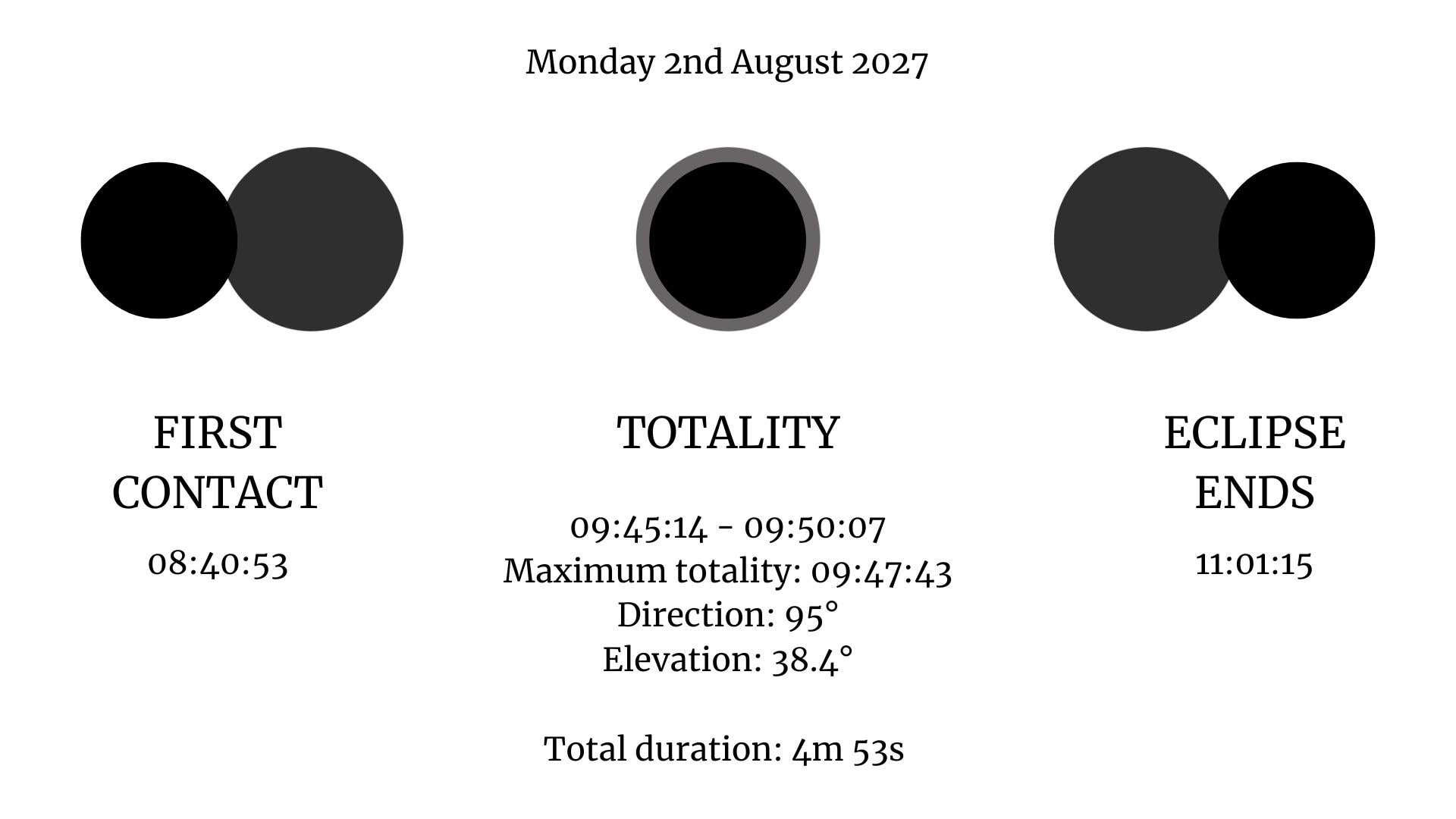
As the sun and the moon move away from each other in the early afternoon, you will set sail across the Mediterranean Sea towards the Spanish coast.
DAY 11: SPAIN - GRANADA
In the morning, you will arrive at the port of Motril, where you will disembark for your choice of two experiences in the ultimate Moorish city and the southern slopes of the Sierra Nevada, the Alpujarra's.
Option 1: Moorish Granada - Architecture
The Moors, who ruled parts of Spain and North Africa for centuries, had a profound connection with astronomy. They built observatories, refined astrolabes, and translated Greek texts, advancing navigation and timekeeping. Their contributions shaped the Islamic Golden Age and influenced later European discoveries.
Granada offers a vivid glimpse into Moorish sophistication and the Christian monarchy’s efforts to reclaim the Iberian Peninsula. The city is dotted with monuments reflecting the power and legacy of both empires.
At its heart stands the Alhambra, a masterpiece of Moorish art and engineering. Religious beliefs forbade depictions of Allah, so artisans wove Qur’anic verses into intricate calligraphy, tilework, and garden design. Water features disguised advanced engineering, while Charles V’s 15th-century palace atop the original ramparts symbolizes the Reconquista’s final chapter.
Option 2: The Alpujarra - Villages, culture and culinary exploration
For returning visitors to Granada, you can enjoy a more intimate experience of the Alpujarra – a region of whitewashed villages and almond groves, long known as Andalusia’s food basket. Culinary traditions here blend Moorish and early Christian influences, from centuries-old pastry recipes to ancient meat-curing techniques.
Once a hub of Christian resistance during the Arab invasion, the Alpujarra flourished under Muslim rule. After the Catholic conquest, Muslims were forced to convert or leave; those who stayed became known as Moriscos. Though their customs were suppressed, many are now being revived. In villages like Pampaneira and Trevélez, traditions are returning. We visit one such village to explore its heritage, followed by lunch at a typical Alquería de Morayma, where we meet descendants of the Moriscos and hear their stories.
DAY 12: CARTAGENA’S ROMAN THEATRE AND NATIONAL MUSEUM OF SUBAQUATIC ARCHAEOLOGY
After sailing east along the Spanish coast, you will dock near Cartagena to explore its central Roman theatre, a fascinating example of a Roman tiered semi-circular theatre in use over 2000 years ago and still in excellent condition. The tour is designed to take you on a journey through time, tracing the history of this well-preserved architectural example.
Just 10 minutes walk from the theatre, you will visit ARQVA, the National Museum of Subaquatic Archaeology, which hosts a diverse collection of artefacts recovered from shipwrecks dating from Phoenician times to the 19th century. Here, the 14.5-tonne cargo of gold and silver coins recovered from the wreck of the frigate Nuestra Señora de las Mercedes is housed for cataloguing, study and display.
After the visits, you will return to the ship for dinner and a slow sail to Valencia.
DAY 13: VALENCIA'S SCIENCE AND CULTURAL HEART
At Valencia, you will spend the day at the Ciudad de las Artes y las Ciencias, a 2-kilometre-long scientific and cultural complex that celebrates science, nature and creativity. Your visit will include tickets for the following two exhibitions.
- Hemisfèric is a stunning ovoid sphere that houses three projection systems on a concave screen of 900 square metres. Here, you can immerse yourself in a screening of Postcards from Other Worlds.
- Science Museum, a dynamic, interactive space where you can explore physics, biology, space, and technology through hands-on exhibits, experiments, and displays designed for all ages.
You may also choose to visit Oceanogràfic, one of Europe's largest aquariums contains several different marine environments, almost 45,000 specimens of 500 distinct species
After returning to the ship, there will be a farewell dinner with all the ship’s crew and expedition team.
DAY 14: ARRIVE IN BARCELONA AND DISEMBARK
After breakfast, you will disembark at the major European city of Barcelona, famous for its history, art and architecture. Why not stay here for a few extra days and explore at your leisure?
